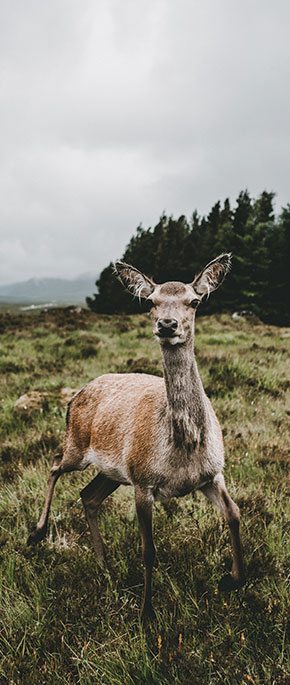Based on their ability to feel, think, and care about their lives, animals deserve to be included within human’s moral community. Animals matter, according to philosopher Mary Midgley,[12]because “things matter to them.” But to what extent do animals matter to us?
Throughout history, Western culture has demonstrated various levels of concern for the welfare of nonhuman animals, with cruelty to animals being more narrowly defined in the past as anything that caused wanton suffering – suffering in excess of what is necessary to benefit humans.[13] This animal welfare perspective for “humane use” of animals can be considered mainstream today, especially in showing concern for reducing the suffering of companion animals and other animals humans find charismatic or appealing. The fact that we employ our own species’ name (“humane”) to define what is or is not kind demonstrates the weight we place on our own species’ viewpoint and perceived morality.
There is also the animal rights perspective, which advances a higher standard of moral consideration than is encompassed by human-centered worldviews such as the animal welfare perspective. The animal rights perspective recognizes nonhuman animals as fellow subjects of a life, not lesser beings or objects for human use, and therefore grants them the right to freedom from human exploitation for food, research, clothing, and entertainment. Rightists seek an end to the domestication, enslavement, and property-status of animals.[14] A goal of the movement is elimination of speciesism, a humanist bias that discriminates against the interests of other animals based on the sole fact that they are not human. Speciesism shares some parallels with racism and sexism, hierarchical systems where humans who are not white or male have historically been discriminated against, sometimes on the basis of being compared to so-called lowly and irrational animals.[15] The animal rights movement has a moral vision where humans share the planet fairly with fellow animals, give them space to live freely on their own terms, respect their agency, avoid as much harm as possible, eat a plant-based diet, care for any animals and habitats we injure, and form relationships of mutual benefit and choice.[16]
The animal protection movement as a whole, comprising welfare and rights groups, has developed rapidly over the last 150 years; at the turn of the 20th century there were about 700 animal protection organizations. One century later, the number increased to approximately 7,000 organizations with over 10 million members.[17]
References
[12] Midgley, Mary (2008). “Why Farm Animals Matter.” In The Future of Animal Farming, edited by Marian Stamp Dawkins & Roland Bonney, 21–31. Oxford: Blackwell Pub. p. 21
[13] Linzey, Andrew, & Paul Clarke. (2004). Animal Rights: A Historical Anthology. New York: Columbia University Press.
[14] See books on animal rights philosophy such as: Francione, Gary L. (1996). Rain Without Thunder: The Ideology of the Animal Rights Movement. Philadelphia, PA: Temple University Press. And Nibert, David Alan. (2013). Animal Oppression and Human Violence: Domesecration, Capitalism, and Global Conflict. New York: Columbia University Press. And Regan, Tom. (1983). The Case for Animal Rights. Berkeley: University of California Press.
[15] For speciesism, see Singer, Peter (1990). Animal Liberation. 2nd ed. New York: Random House. And Dunayer, Joan (2004). Speciesism, New York: Lantern Books. For information on parallels between speciesism, sexism, and racism, see books such as: Adams, Carol J. (1990). The Sexual Politics of Meat: A Feminist-vegetarian Critical Theory. New York: Continuum. And Harper, A. Breeze (2010). Sistah Vegan: Black Female Vegans Speak on Food, Identity, Health, and Society, New York: Lantern Books. And Spiegel, Marjorie (1996). The Dreaded Comparison: Human and Animal Slavery. New York: Mirror Books.
[16] See various visions of animal rights in books such as these: Donaldson, Sue, & Kymlicka, Will (2011). Zoopolis: A Political Theory of Animal Rights, Oxford: Oxford University Press. And Hall, Lee (2010). On Their Own Terms: Bringing Animal Rights Philosophy Down to Earth, Darien, CT: Nectar Bat Press. And Steiner, Gary (2008). Animals and the Moral Community: Mental Life, Moral Status, and Kinship. New York: Columbia University Press.
[17] Beers, Diane L. (2006). For the Prevention of Cruelty: The History and Legacy of Animal Rights Activism in the United States. Athens, Ohio: Ohio University Press. p. 3
For citation purposes, this page was last updated December 2014

